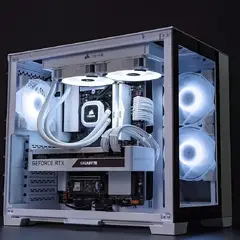comparing prices in Seagate website Drive Design (Air or Helium) what to pick ?
Go to solution
Solved by Electronics Wizardy,
It looks like only the 10TB model is available in both options. Typically helium is used for large capacity drives, and air is used for smaller drives to save cost. It doesn't seem to matter much for most uses and I haven't seen anything that points to a major difference in failure rate.
I'd typically reccomend getting large drives for your nas like 16TB+, so helium is your only option.


















Create an account or sign in to comment
You need to be a member in order to leave a comment
Create an account
Sign up for a new account in our community. It's easy!
Register a new accountSign in
Already have an account? Sign in here.
Sign In Now